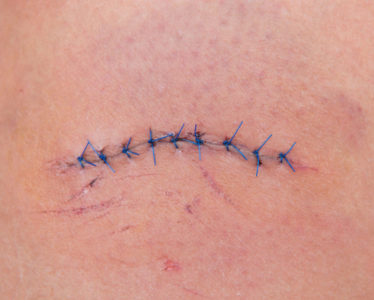 A high school student’s science fair project could end up radically changing the medical world by helping patients detect the presence of an infection sooner after surgery has been performed.
A high school student’s science fair project could end up radically changing the medical world by helping patients detect the presence of an infection sooner after surgery has been performed.
Dasia Taylor’s science fair project was recently named one of 40 finalists for the Regeneron Science Talent Search, the country’s oldest and arguably most prestigious science and math competition for high school seniors. But Taylor’s ambitions go well beyond the science fair, as she hopes to be able to help countless patients stay ahead of potentially devastating infections.
Taylor’s project is a surgical suture that changes color when an infection develops at the surgical site. These “smart” sutures could help to catch an infection when it’s in an earlier stage, which oftentimes yields better treatment outcomes. Not only could they be effective in the US, where infections develop following 2-4 percent of surgeries, but they could also be immensely helpful in low and middle-income countries, where infections develop after roughly 11 percent of surgeries.
Why The Sutures Change Color
The science behind the color changing sutures is fascinating. The human skin is naturally acidic with a pH level around 5, and when a wound becomes infected, the pH level goes up to about 9. Changes in pH levels can be detected without electronics, and many fruits and vegetables are natural indicators that change colors as pH levels rise or fall.
“I found that beets changed color at the perfect pH point,” says Taylor. Bright red beet juice turns dark purple at a pH of nine. “That’s perfect for an infected wound. And so, I was like, ‘Oh, okay. So beets is where it’s at.’”
Taylor used red beet juice to dye a number of different sutures to see which best held and changed the color. She eventually landed on a cotton-polyester blend that, after five minutes at an infection-like pH level, changed from bright red to dark purple. Moreover, after three days, the purple fades to a light gray.
So while the product is based in sound science, it’s far from a finished product. Taylor and others will need to figure out how to get these color-changing sutures down to a reasonable price so they can compete with what’s currently on the market. They also know that these sutures aren’t a perfect solution for all types of surgical scars, and that some infections can develop below the skin. However, for the right patient, this idea could help prevent major complications from an infection that goes undetected for too long.
We’ll keep an eye on this science and we wish Dasia all the best on her future endeavors. We need more minds like hers in the medical community.